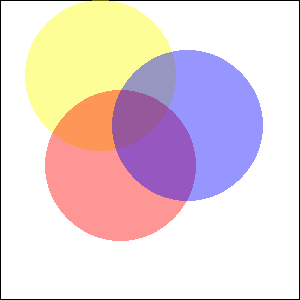imagecolorallocatealpha
(PHP 4 >= 4.3.2, PHP 5)
imagecolorallocatealpha — Allocate a color for an image
Description
$image
, int $red
, int $green
, int $blue
, int $alpha
)
imagecolorallocatealpha() behaves identically to
imagecolorallocate() with the addition of the transparency
parameter alpha.
Parameters
-
image -
An image resource, returned by one of the image creation functions, such as imagecreatetruecolor().
-
red -
Value of red component.
-
green -
Value of green component.
-
blue -
Value of blue component.
-
alpha -
A value between 0 and 127. 0 indicates completely opaque while 127 indicates completely transparent.
Return Values
A color identifier or FALSE if the allocation failed.
This function may
return Boolean FALSE, but may also return a non-Boolean value which
evaluates to FALSE. Please read the section on Booleans for more
information. Use the ===
operator for testing the return value of this
function.
Changelog
| Version | Description |
|---|---|
| Prior to 5.1.3 | Returns -1 if the allocation failed. |
Examples
Example #1 Example of using imagecolorallocatealpha()
<?php
$size = 300;
$image=imagecreatetruecolor($size, $size);
// something to get a white background with black border
$back = imagecolorallocate($image, 255, 255, 255);
$border = imagecolorallocate($image, 0, 0, 0);
imagefilledrectangle($image, 0, 0, $size - 1, $size - 1, $back);
imagerectangle($image, 0, 0, $size - 1, $size - 1, $border);
$yellow_x = 100;
$yellow_y = 75;
$red_x = 120;
$red_y = 165;
$blue_x = 187;
$blue_y = 125;
$radius = 150;
// allocate colors with alpha values
$yellow = imagecolorallocatealpha($image, 255, 255, 0, 75);
$red = imagecolorallocatealpha($image, 255, 0, 0, 75);
$blue = imagecolorallocatealpha($image, 0, 0, 255, 75);
// drawing 3 overlapped circle
imagefilledellipse($image, $yellow_x, $yellow_y, $radius, $radius, $yellow);
imagefilledellipse($image, $red_x, $red_y, $radius, $radius, $red);
imagefilledellipse($image, $blue_x, $blue_y, $radius, $radius, $blue);
// don't forget to output a correct header!
header('Content-Type: image/png');
// and finally, output the result
imagepng($image);
imagedestroy($image);
?>
The above example will output something similar to:

Notes
Note: This function requires GD 2.0.1 or later (2.0.28 or later is recommended).
See Also
- imagecolorallocate() - Allocate a color for an image
- imagecolordeallocate() - De-allocate a color for an image